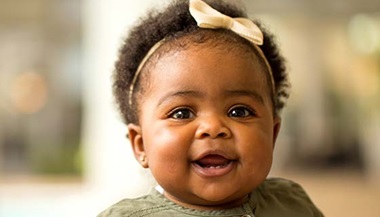Anatomy and Development of the Mouth and Teeth
Teeth start developing in the fetus. Good nutrition from the mother during pregnancy is important in the development of the teeth. The mother's diet should have adequate amounts of calcium, phosphorus, vitamin C, and vitamin D. Certain medicines, such as tetracycline, should not be taken by the mother while she is pregnant. These can cause discoloration to the developing teeth of the embryo. There are 4 main stages of development of the tooth:
-
The first stage begins in the fetus at about 6 weeks of age. This is when the basic substance of the tooth forms.
-
Next, the hard tissue that surrounds the teeth is formed, around 3 to 4 months of gestation.
-
After the child is born, the next stage occurs when the tooth actually protrudes through the gum.
-
Finally, there is the loss of the primary "baby" teeth.
Parts of the tooth
Each tooth has 4 main parts, including the following:
-
Enamel. The outer layer of the tooth and the hardest material in the body.
-
Dentin. The inner layer and the main part of the tooth, and the largest dental tissue.
-
Pulp. Soft tissue on the inside of the tooth that contains the nerve, blood supply, and the ability to produce dentin.
-
Root. The part of the tooth that secures it into the jaw.
When will my child's teeth come in?
While every child is different, the primary teeth begin to come in between the ages of 6 and 12 months. Most of the primary teeth (baby teeth) will have erupted by 33 months. Girls tend to have their teeth come in before boys. The following are general guidelines for the eruption of the baby teeth:
-
The first tooth to erupt is usually a middle, front tooth on the lower jaw, known as the central incisor. This is followed by the second central incisor on the lower jaw.
-
Next, the four upper incisors usually come in.
-
The above is followed by the first 4 molars, and the remaining bottom 2 lateral incisors. Lateral incisors are beside (lateral to) the central incisors. Next, the 4 first molars come in.
-
Then the cuspids, or the pointed teeth, appear.
-
Usually, after the child reaches 2 years old, the 4 second molars (the last of the baby teeth) appear.
The teeth on the upper jaw usually erupt 1 to 2 months after the same tooth on the lower jaw. There are a total of 20 primary teeth. Usually, about 1 tooth erupts per month once the teeth have started coming in. There is normally a space between all the baby teeth. This leaves room for the larger permanent teeth to erupt.
The eruption sequence can vary quite a bit from child to child. So, don't become overly concerned if your child's teeth do not follow the pattern above. However, if teeth fail to come in a year after the expected time, check with your child's dentist to make sure they are developing properly. Below is a chart showing average ages of eruption and shedding:
When will my child's permanent teeth come in?
Your child will begin losing his or her primary teeth (baby teeth) around the age of 6. The first teeth to be lost are usually the central incisors. This is then followed by the eruption of the first permanent molars. The last baby tooth is usually lost around the age of 12, and is the cuspid or second molar. There will be a total of 32 permanent, or adult, teeth.







